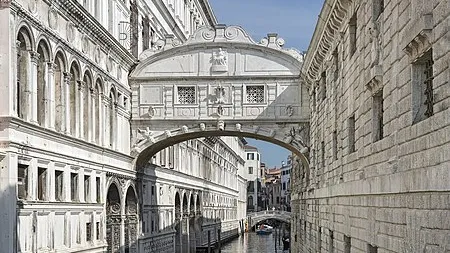Lovers of secrets and mysteries have long been familiar with the attic rooms of the Doge’s Palace, especially the “lead prison”, which after the escape of Giacomo Casanova gained fame as Europe’s most famous place of confinement. But the mysteries and secrets of the Doge’s Palace do not end there. Relatively recently, the infamous “Pozzi” wells were opened to the public. The damp and barren prison cells of the Doge’s Palace were located on the first floor. When it was determined at the end of the 16th century that more prison cells were needed, the Venetian government began construction of a new building called the Prigioni Nuove (New Prisons). The famous Bridge of Sighs was built as a passageway between the palace and the prison and accessed through the Sala del Maggiore Consiglio on the second floor.
n
After restoration, the most intimidating cells of the Venetian prison, run by the Council of Ten, the Consiglio dei Dieci, became accessible for viewing. The Council of Ten was an espionage service created in 1310 after it became known that Doge Faler was plotting to overthrow the government. The council met in this private room to keep an eye on the other branches of government (for example, by reading incoming and outgoing mail).
Veronese’s work adorns the ceiling, and there is a large painting by Tiepolo, The Gifts of Neptune Giving Venice. Immersed in the eternal darkness of the nineteenth century, stone sacks ranging in size from 5.5 to 12 sq. m. – drove the weak to a quick death and the stronger to frenzy and madness. Those who were destined to languish in these dungeons immortalized their experiences on the walls of their dungeons: from banal inscriptions and lewd drawings to real masterpieces.
Everything you see, accompanied by a story about the fate of the prisoners, convinces you of the justice of the Venetian system of punishment and re-education.

















